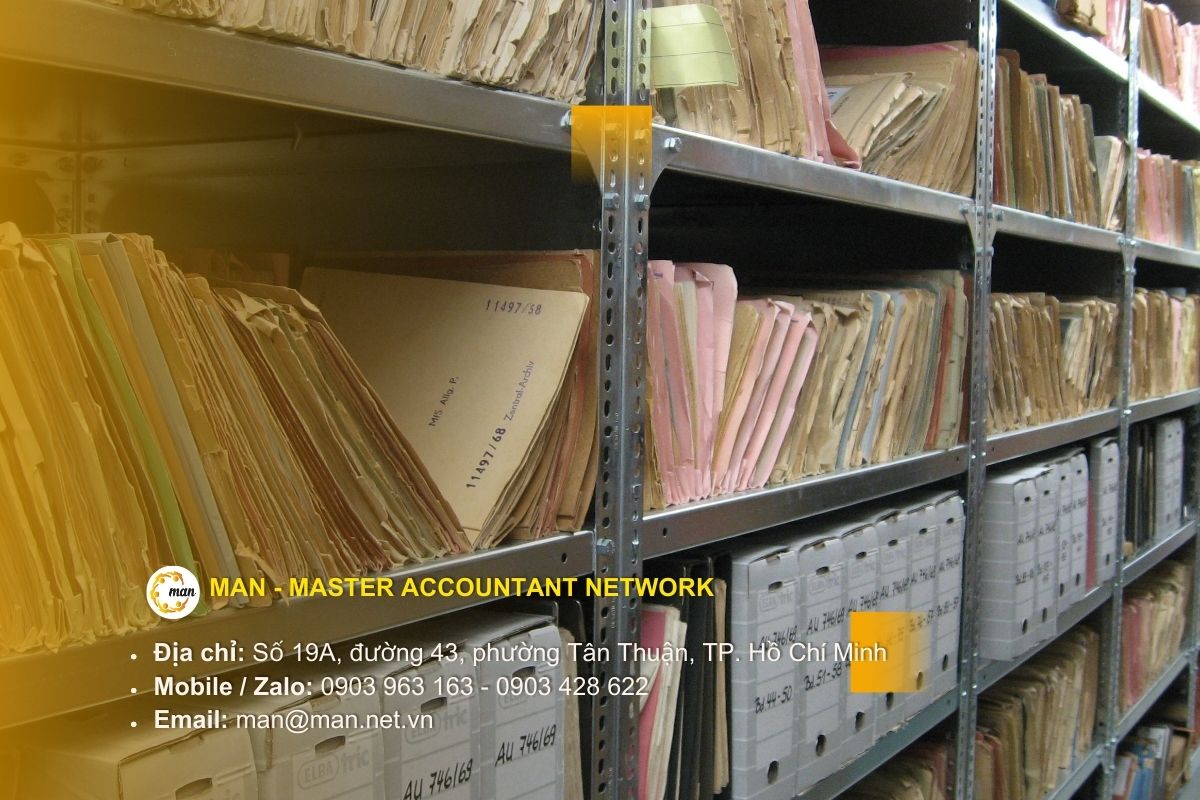The Master File is a key document in the tax and related party transaction management of multinational corporations. According to the OECD 2023 Report, about 70% multinational enterprises establish a Master File to comply with the arm's length principle, minimizing transfer pricing risks. Establishing a complete global file not only helps enterprises to be transparent in transactions with related parties but also ensures compliance with Vietnamese tax laws on transfer pricing and supports international reporting according to OECD regulations. As a result, the Master File helps reduce the possibility of price adjustments and tax arrears, while enhancing transparency in global financial management.
With these important roles in mind, we will next explore in detail the content, requirements and how to create a global profile for businesses to comply with international laws and standards.
Concept and role of global profile
What is a global profile?
The Master File is a mandatory document that multinational corporations must prepare, according to the OECD's guidelines on transfer pricing documentation. The Master File compiles information on the group's structure, business strategy, transfer pricing strategy, and policies for managing related-party transactions.
Different from Local File, which focuses on the details of related-party transactions in a specific country, the Master File has a global scope, providing context for tax authorities to understand transfer pricing strategies and relationships between companies in the group. Meanwhile, the IGF (Intercompany Global File) focuses on aggregating cross-border related-party transactions to support global risk management.
The main roles of the Master File include:
Provides strategic and structural context for tax authorities to assess transfer pricing risks.
Serves as a reference for Local File and IGF in demonstrating the market price of related transactions.
Support compliance with OECD regulations on transfer pricing documentation and Vietnamese tax laws on transfer pricing.
Role in multinational corporations

In multinational corporations, Master File helps manage cross-border transactions efficiently by:
Help corporations assess and control transfer pricing risks globally.
Provide evidence and analysis to demonstrate market prices, ensuring inter-company transactions comply with Vietnamese tax laws on transfer pricing.
Example: A multinational corporation operating in the high-tech manufacturing sector maintains a Master File that summarizes information about its subsidiaries in Vietnam, Singapore, and Germany. Each subsidiary in each country maintains a Local File detailing transactions with the parent company. The Master File allows the corporation to demonstrate that the valuation method applied to each transaction is consistent with the arm's length principle, reducing the risk of price adjustments or tax collection.
Required content in global profile
Corporate information and transfer pricing strategy
In the Master File, the enterprise needs to provide complete information about the multinational corporation, including:
Corporate structure: list of parent company, subsidiaries and international branches.
Ownership structure: ownership ratio, relationship between companies in the group.
Corporate transfer pricing strategy: pricing policies and pricing methods applied to cross-border related party transactions.
The detailed presentation helps tax authorities understand the group's business context and strategy, and supports subsidiaries in preparing detailed Local Files.
Example: A technology corporation created a Master File with a corporate structure diagram including a parent company in the US, branches in Vietnam, Singapore and Germany, along with a transfer pricing strategy and pricing policies for services and goods transactions.
Cross-border affiliate trading
The Master File should list all cross-border related transactions between companies in the group, including:
Buying and selling goods, providing services.
Transfer of assets, intellectual property rights.
Internal financial transactions.
Each transaction should describe the valuation method applied. arm's length principle, with an independent market comparison basis. This helps reduce transfer pricing risks and demonstrate compliance with Vietnamese law and OECD standards.
Illustrative example: A parent company provides management services to a branch in Vietnam with service fees calculated based on independent market rates, as evidenced by comparative data from similar service contracts.
Market price summary and proof report
The Master File needs to synthesize data from the Local File and IGF, creating a consolidated transfer pricing report to demonstrate market prices:
List transactions, valuation methods, and comparative analysis results.
Summarize corporate transfer pricing strategy and how to apply the arm's length principle.
Example of a summary report of transactions and pricing methods:
| Affiliated companies | Transaction type | Valuation method | Market price comparison results | Note |
|---|---|---|---|---|
| Vietnam subsidiary | Management services | Cost plus interest | Market fit | Comply with the arm's length principle |
| Singapore subsidiary | Selling goods | Independent comparison prices | Difference ≤5% | Data from independent contracts |
| German subsidiary | Transfer of assets | Profit allocation | Market fit | IGF referenced |
This report helps the group to be transparent in managing cross-border related party transactions, support the demonstration of market prices and comply with Vietnamese tax laws on transfer pricing.
Relationship between Master File, Local File and IGF
In the management of related party transactions of multinational corporations, Master File, Local File and IGF are closely related but different in scope, content and purpose. Understanding this difference helps enterprises comply with Vietnamese tax law on transfer pricing, apply the arm's length principle, and effectively manage transfer pricing risks.
| Criteria | Local File | Master File | IGF |
|---|---|---|---|
| Scope | Affiliate transactions in the country | The entire group | Cross-border transactions within the group |
| Content | Related party information, transaction details, valuation methods, transfer pricing reports | Corporate structure, business strategy, transfer pricing strategy, corporate policy | Transaction overview, scope and value, not transaction details |
| Purpose | Comply with Vietnamese tax laws | Support for Local File context and data | Global transfer pricing risk management |
| For example | Subsidiary establishes Local File in Vietnam | Master File summarizes information of multinational corporations | IGF aggregates transactions between parent companies and international subsidiaries |
Detailed explanation:
Local File: Records all related party transactions in the country, details of each transaction and valuation method. This is a mandatory document under Vietnamese tax law on transfer pricing.
Master File: Provides the overall context for the group, including the group structure, business strategy and transfer pricing strategy. The Master File helps tax authorities understand the context of the Local Files.
IGF (Intercompany Global File): Synthesizes cross-border transactions within the group, helping the group assess global transfer pricing risks and control the transparency of intercompany transactions.
The combination of local file, master file and IGF allows multinational corporations to demonstrate market prices for each transaction, while complying with OECD regulations on transfer pricing documentation and Vietnamese tax law on transfer pricing, minimizing transfer pricing risks and enhancing transparency in tax administration.
Legal regulations and international standards
In managing related party transactions, enterprises must comply with both Vietnamese tax laws and international standards according to OECD guidelines. Understanding these regulations helps ensure that the Master File, Local File and IGF are prepared correctly, transparently and minimize transfer pricing risks.

Vietnam Tax Law on Transfer Pricing
According to Vietnam's tax law on transfer pricing, enterprises with related-party transactions must establish a national file (Local File) to prove that the transaction price between related parties is determined according to the arm's length principle.
Basic requirements include:
Create a detailed Local File, recording affiliate information and all affiliate transactions in Vietnam.
Describe the valuation method applied to each transaction to demonstrate market price.
Synthesize transfer pricing reports, with data demonstrating legal compliance.
Full compliance helps businesses avoid price adjustments, tax arrears and enhances their reputation with tax authorities.
OECD regulations on transfer pricing documentation
The OECD transfer pricing documentation guidelines require multinational corporations to prepare documentation at three levels:
Master File: Summary of corporate information, business strategy and transfer pricing strategy.
Local File: Details of related party transactions in each country, valuation methods, transfer pricing reports.
IGF (Intercompany Global File): Aggregates cross-border transactions, helping manage risks and make global transactions transparent.
The arm's length principle applies globally, ensuring that related-party transactions are priced similarly to independent transactions in the market.
| Criteria | Vietnam Tax Law | OECD Guidelines |
|---|---|---|
| Request Profile | Local File | Master File, Local File, IGF |
| Scope of application | Affiliated transactions in Vietnam | Multinational enterprises, international intercompany transactions |
| Pricing principles | Arm's length principle | Arm's length principle |
| Purpose | Demonstrate market value, comply with the law | Support global risk management, transparent inter-company transactions |
Combining compliance with Vietnamese tax laws on transfer pricing and OECD regulations on transfer pricing documentation helps businesses to make transactions transparent, demonstrate market prices, while minimizing transfer pricing risks and enhancing international reputation.
Risks and considerations when creating a global profile
Establishing a Master File in a multinational corporation is an important step to manage cross-border related-party transactions and demonstrate market prices. However, if the file is incomplete or does not comply with the arm's length principle, the enterprise will face many transfer pricing risks.
Transfer pricing risk
Common mistakes when creating a Master File include:
Lack of corporate information: no description of corporate structure, ownership structure, international branches.
Incomplete transaction details: missing listing of cross-border related transactions, contracts, invoices or accompanying documents.
Non-standard pricing method: applying pricing methods that are not in accordance with the arm's length principle, leading to the risk of price adjustment and tax collection.
Example: A multinational corporation created a Master File for its Asian subsidiaries but omitted details of service transactions between the parent company and its branches. When the tax authorities inspected the corporation, they asked for additional information, adjusted prices and could face penalties for failing to demonstrate that the group's transfer pricing strategy and market prices were applied correctly.
Optimize global profile
To minimize transfer pricing risks, businesses need to establish a standard Master File, combined with Local File and IGF. Instructions for optimizing the file include:
Create detailed Master File: Fully record the corporate structure, ownership structure, business strategy and corporate transfer pricing strategy.
Combining Local File and IGF: Use data from Local File to demonstrate transaction details in Vietnam and IGF to aggregate cross-border transactions, ensuring compliance with the arm's length principle.
Quality control of records: Review contracts, invoices, documents and data before submitting to tax authorities.
Regular updates: Adjust records when there are changes in transactions, corporate structures or new legal regulations.
Example: A multinational corporation established a Master File in conjunction with a Local File in Vietnam and IGF to consolidate global transactions. Thanks to complete documentation, the enterprise demonstrated the correct arm's length principle, reduced the risk of tax collection and increased transparency in transfer pricing risk management.
Conclude
Master File or global records play a key role in managing multinational corporations and controlling cross-border transactions. Complete records help businesses be transparent in transactions, demonstrate market prices, minimize transfer pricing risks and comply with Vietnamese tax laws on transfer pricing as well as OECD regulations on transfer pricing records.
To optimize efficiency, businesses should combine Master File, Local File and IGF, ensuring that all transactions are recorded in detail, valuation methods are consistent with the arm's length principle, and data is accurately aggregated for internal reporting and tax authorities.
Contact information MAN – Master Accountant Network
Address: No. 19A, Street 43, Tan Thuan Ward, Ho Chi Minh City
Hotline / Zalo: 0903963163
E-mail: man@man.net.vn
Full compliance with the above guidelines not only enhances the group's reputation in the international market but also helps manage the group's transfer pricing strategy effectively and transparently.
MAN Editorial Board – Master Accountant Network




